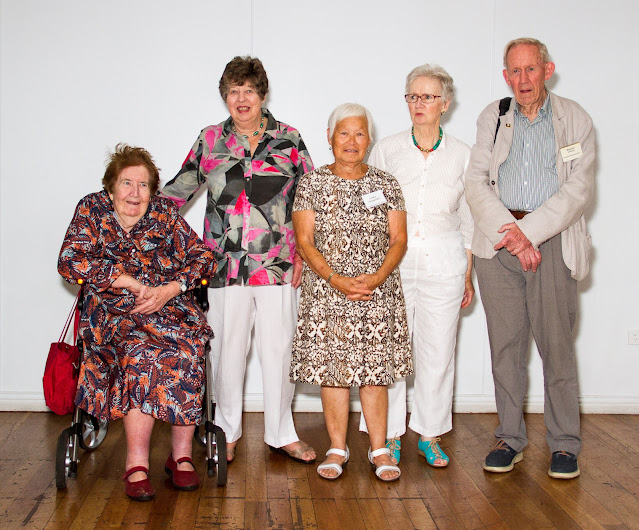 |
| Nats on Mt Basalt |
 |
| Columns on the southern peak |
Species Lists: Mount Basalt & Kooroongarra - compiled from members' observations
introduced species = *
Fauna discussed
or taken note of on the day (not a comprehensive list):
Birds: White-necked Heron, Yellow-billed Spoonbill, Nankeen Kestrel, Little Corella, Sulphur-crested Cockatoo, Pale-headed Rosella, Rainbow Bee-eater, Superb Fairy-wren, Variegated Fairy-wren, Gerygone sp., Spiny-cheeked Honeyeater, Yellow-faced Honeyeater, Brown-headed Honeyeater, Grey-crowned Babbler, Rufous Whistler, Grey Shrike-thrush, Olive-backed Oriole, Grey Butcherbird, Pied Butcherbird, Australian Magpie, Willie Wagtail, Apostlebird, Magpie-lark, Silvereye, Mistletoebird, Double-barred Finch.
Butterflies: Clearwing Swallowtail (Cressida cressida), Caper White (Belenois java), Lesser Wanderer (Danaus petilia), Common Crow (Euploea core).
Flora discussed or taken note of on the day (not a comprehensive list):
Ferns: Poison Rock Fern or
Mulga Fern (Cheilanthes sieberi).
Herbs: Forest Daisy (Brachyscome
macrocarpa), Yellow Burr Daisy (Calotis
sp.), White Burr Daisy (Calotis
cuneifolia), Yellow Buttons (Chrysocephalum
apiculatum), Star Goodenia or Round-leaf Goodenia (Goodenia rotundifolia), Gallweed (Roepera apiculata), *a Prickly nightshade (Solanum sp.), Warrigal Greens (Tetragonia
tetragonoides), a Native Bluebell (Wahlenbergia
sp.).
Vines: Wonga
Vine (Pandorea pandorana).
Shrubs: Kunkerberry (Carissa ovata), Narrow-leafed Hop Bush (Dodonaea viscosa subsp. angustifolia),
Red Berry Saltbush (Einadia hastata),
Ruby Saltbush (Enchylaena tomentose),
Winter
Apple (Eromophila debilis), Dogwood (Jacksonia
scoparia), Small-leaf Bluebush (Maireana microphylla), Hedge Saltbush (Rhagodia spinescens), Galvanised Burr (Sclerolaena birchii), Darling Pea (Swainsona galegifolia).
Trees: Bulloak (Allocasuarina luehmannii), Bitterbark (Alstonia constricta), Sweet Bursaria (Bursaria spinosa), White Cypress Pine (Callitris glaucaphylla), Poplar Box (Eucalyptus populneus).










